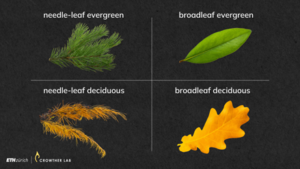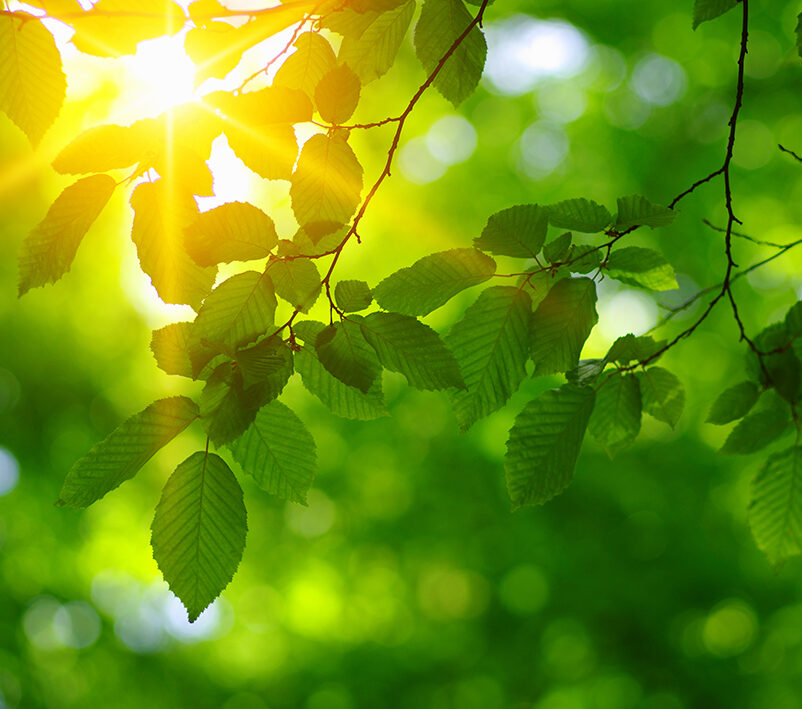What different types of leaves can tell us about our forests
Knowing how much carbon broadleaf evergreen trees store compared to their low numbers shows that they are worth protecting
Up to one-third of the Earth’s forested areas may experience climate change stress by the end of the century
The Earth is home to a staggering three trillion trees, or about 422 trees per human being. The research that led to this map revealed a lot about where tree density was highest or how many trees have been lost since the beginning of modern human civilization. But it didn’t give insight into what kind of trees those three trillion are composed of. Now, a team of researchers including Sergio de Miguel, leader of the Global forest ecosystem research group at the Forest Science and Technology Centre of Catalonia (CTFC), researcher of the Joint Research Unit CTFC-AGROTECNIO-CERCA, and a professor at the University of Lleida, led by the Crowther lab at ETH Zurich, set out to learn about the abundance of different types of trees, focusing on leaf data rather than tree density data. But, why leaves?
There is a well-known simulation of the carbon cycle by NASA that visualizes how CO2 concentrations in the atmosphere shift throughout the year. In the winter months, high concentrations color the map red, but as we move into summer, they slowly fade away – for one simple reason: the emergence of leaves on trees. Through processes like photosynthesis, transpiration, respiration, and litterfall, leaves are key agents not just in the carbon, but also in the water and nutrient cycle of forest ecosystems worldwide.
Leaves come in a wide variety of properties – like texture, color, or whether and when trees shed them – that reflect evolutionary adaptations to a plant’s needs and environment. The new research, published in Nature Plants, focused on two leaf traits: leaf habit and form. Leaf habit refers to whether they are deciduous (shed by a plant during unfavorable seasons) or evergreen. Leaf form refers to the distinction between needles and broadleaves. In combination, these two traits result in four leaf types with which to count the world’s trees: needle-leaf deciduous and needle-leaf evergreen, and broadleaf deciduous and broadleaf evergreen.
The analysis, the first to globally count and map leaf types, shows: at 38% needle-leaf evergreen trees make up the highest number of trees around the world. The highest tree densities for needle-leaf evergreen trees are found in boreal and subarctic regions. In second and third place come broadleaf evergreen trees at 29% and broadleaf deciduous trees at 27% respectively. Last but not least, needle-leaf deciduous trees comprise, at 5%, the smallest number of trees on Earth.
 The distribution of leaf type abundances, however, gets more interesting, when put in comparison with how much aboveground forest biomass is stored in each of the four leaf types. Research shows that broadleaf evergreen trees contribute the most biomass, making up 54% (335.7 Gt C) of the world’s aboveground forest biomass. So, while there are many more needle-leaf evergreen trees than there are broadleaf trees, needle-leaf evergreen trees in comparison only store 21% (136.4 Gt C) of the global aboveground forest biomass.
The distribution of leaf type abundances, however, gets more interesting, when put in comparison with how much aboveground forest biomass is stored in each of the four leaf types. Research shows that broadleaf evergreen trees contribute the most biomass, making up 54% (335.7 Gt C) of the world’s aboveground forest biomass. So, while there are many more needle-leaf evergreen trees than there are broadleaf trees, needle-leaf evergreen trees in comparison only store 21% (136.4 Gt C) of the global aboveground forest biomass.
These findings come at a time when global forests are receiving a lot of attention. In recent years, much hope has been pinned on forests as allies in efforts to draw down carbon emissions. Understanding how much carbon broadleaf evergreen trees are able to store as well as how comparatively few of them exist highlights that they are very much worth protecting. After all, forests face a variety of threats such as deforestation, excessive wildfires, biodiversity loss – especially in tropical regions where many broadleaf evergreen trees can be found.
Climate change will place additional stress on forests around the world. Assessing three future emission scenarios, the researchers found that up to one-third of Earth’s forested areas are likely to experience stress due to climatic changes by the end of the century. The team isn’t sure whether some regions will still be home to trees of the same leaf types as today.
To counter the risks that climate change brings, drastic emission cuts now will be necessary, as the conservation and restoration of forests alone are not silver bullets. This kind of research can help to see the forests for the leaves – by both improving future modeling efforts of the global carbon cycle and by guiding forest conservationists and managers to make informed decisions.
Further information:
Ma, H., Crowther, T.W., Mo, L., …, De-Miguel, S. et al. (2023). The global biogeography of tree leaf form and habit. Nature Plants. https://doi.org/10.1038/s41477-023-01543-5
Last modified: 25 October 2023










